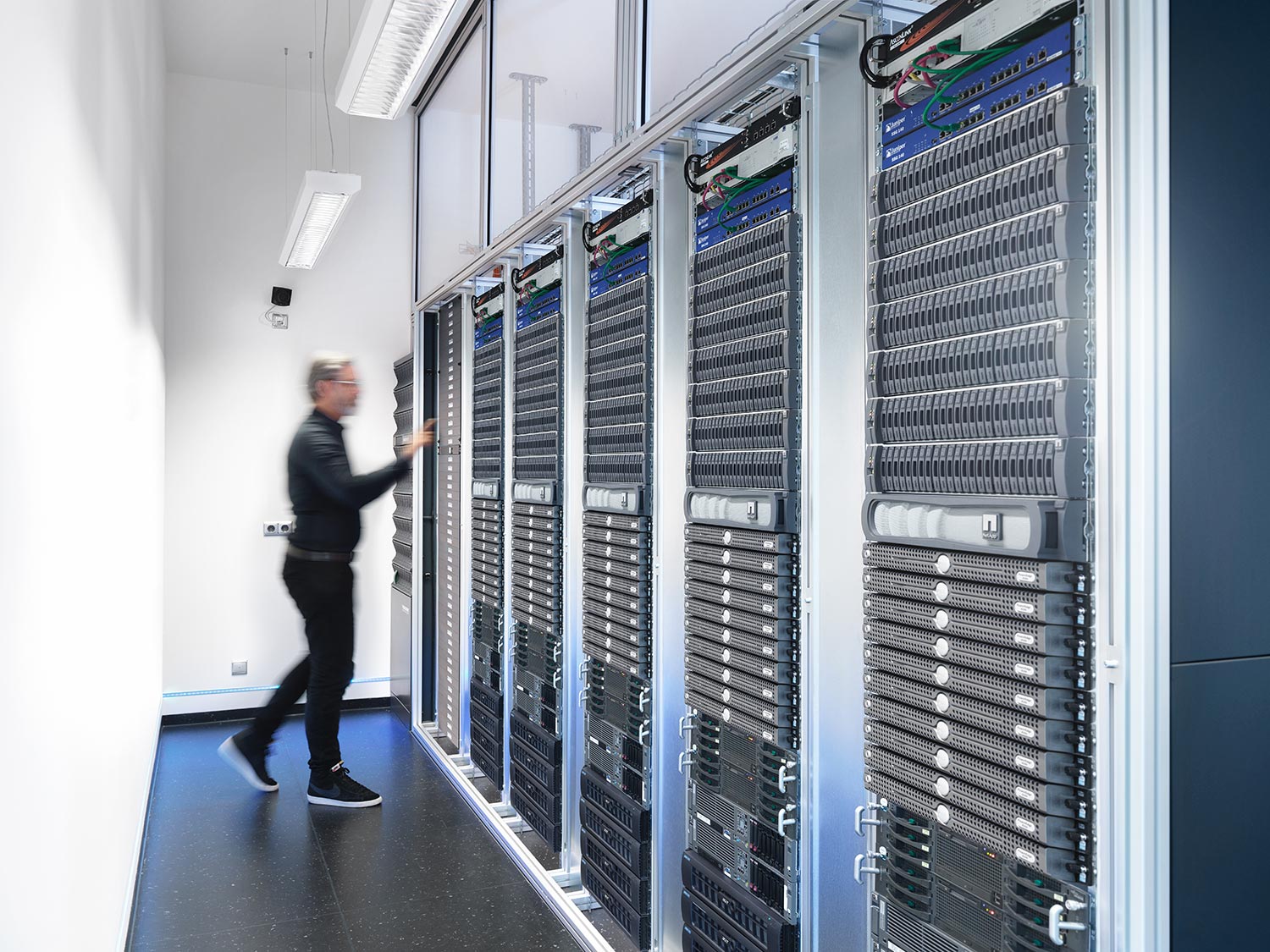A hyperscale data centre is an IT environment designed to build and operate large-scale, CPU-intensive applications, such as those commonly used by large tech companies, e.g. Google, Amazon or Facebook. This type of data centre is designed to house thousands of servers that can seamlessly communicate with each other and manage big data.
In contrast to traditional data centres, which are geared towards the needs of medium-sized companies, hyperscale data centres are tailored to a significantly higher computing load. Their ability to achieve high data processing performance using state-of-the-art technology sets them apart from traditional data centres.
In this article, we outline the essential properties and requirements of hyperscale data centres. We will also show you an attractive alternative that may also offer a solution to your needs.
Properties and requirements
The key properties of a hyperscale data centre are size and, ideally, planned scalability. A typical hyperscale data centre can house up to 5,000 servers and provide enormous computing power. The ability to scale quickly is another key advantage that enables companies to keep up with increasing business demands.
However, in terms of requirements, a hyperscale data centre also places high demands upon infrastructure and management. It requires high bandwidth capacities, effective power and cooling system management, and robust physical and digital security.
An alternative to hyperscale data centres: edge computing
While hyperscale data centres can be ideal for large companies with high data processing requirements, there are also alternative solutions. One of these is edge computing.
In contrast to hyperscale data centres, where all data is processed in a central location, edge computing uses a decentralised architecture. With the hyperscale variant, data processing takes place closer to the storage location, which results in lower latency and increased speed. On the other hand, edge computing enables significantly improved efficiency, enabling unneeded capacity to be used at other locations.
Although edge computing also offers some advantages, it comes with its own challenges too. Decentralisation can result in more security risks and increase the need to manage multiple locations. Nevertheless, it offers significantly better cost efficiency over hyperscale data centres.
Modular data centres: the optimal solution?
Cadolto Datacenter’s experience and expertise mean we are able to meet your hyperscale data centre or edge computing needs. Our modular data centres are highly scalable and enable fast, efficient deployment. Whether you wish to operate a central hyperscale data centre or distribute modules at multiple locations for edge computing, we offer solutions for both setups!
Our modular design offers flexibility and expandability, meaning your data centre can grow with your business. We deploy industrially prefabricated modules that can be delivered to you cost-efficiently and ready to use straight from the factory. Our modular system means increased capacity can be made available to you within a maximum of 72 hours.
But which method is better for your needs – hyperscale or edge computing? Allow us to advise you. Cadolto Datacenter’s experts will be happy to help you make the right decision to suit your needs.


